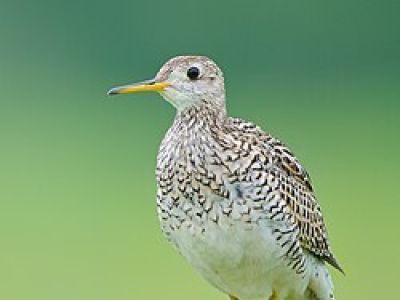B-UPSA-Upland Sandpiper

Upland Sandpiper
Bartramia longicauda
- Phylum: Craniata
- Class: Aves
- Order: Charadriiformes
- Family: Scolopacidae
The upland sandpiper (Bartramia longicauda) is a large sandpiper, closely related to the curlews. Older names are the upland plover and Bartram's sandpiper.
General Information
Key Habitat Features
Short grassland habitats, including native prairie, native meadows, pastures, hayfield, short-grass savannas, cultivated fields, roadsides, wet meadows.
Peatlands and scattered woodlands near tree line.
Prefer nesting in sparse and short grassy cover with limited litter; avoid cover >60 cm.
Objectives
Minimize disturbance during the breeding season.
Maintain nesting habitat throughout all seasons.
Maintain desired plant communities and key habitat features.
Planning and Operational Measures
All Activities
Identify key habitat features using appropriate measures (i.e. QP direction, desktop review, field confirmation, etc) and plan activities within the operating area accordingly.
Time works such that they occur outside of the critical timing window.
All Activities
Undertake construction and operation of oil and gas activities in a manner that minimizes impacts to desired plant communities and key habitat features.
Timing considerations when working within identified habitat:
Avoid disturbance and/or clearing activities during the critical timing window from May 1 to July 31.